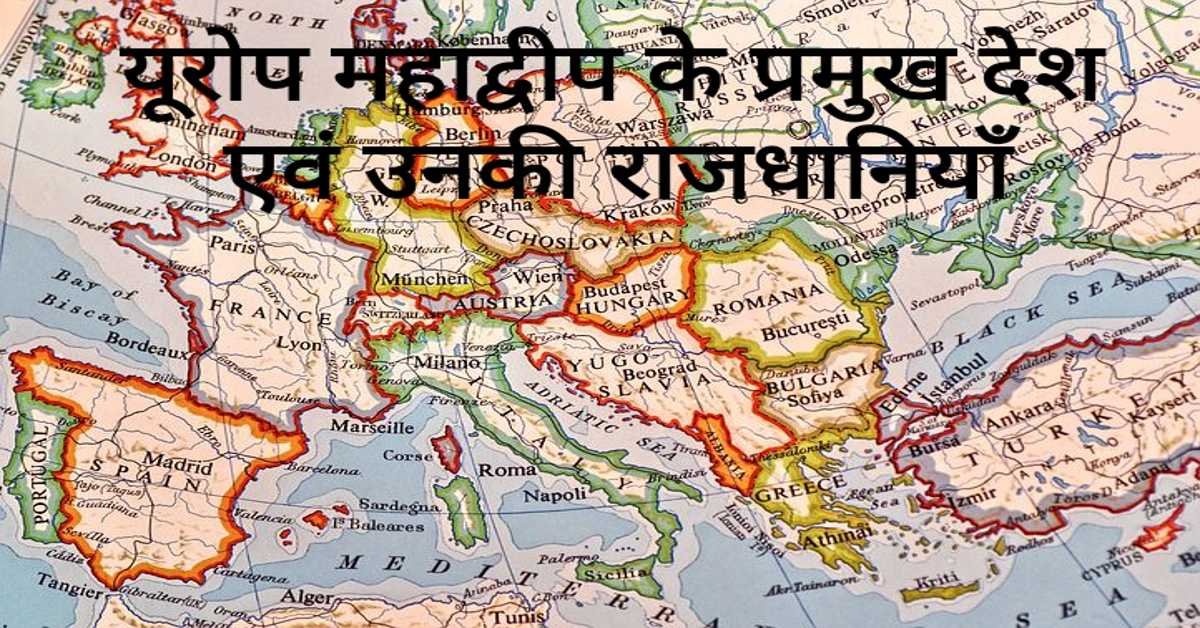
भारत का भूगोल : भारत की जलवायु भारतीय मानसून
Geography of India: Climate of India Indian Monsoon
The climate of India is 'monsoon' . The word monsoon is derived from the word 'mausim' , which is the word for 'Arabic language' . Mausim means 'the seasonal (alternating season) alternation of wind direction' . In India, the direction of the winds from the Arabian Sea and the Bay of Bengal changes with the change of seasons. For this reason, the Indian climate is called 'monsoon climate' .
भारत की जलवायु 'उष्ण मानसूनी' है। कर्क रेखा से ऊपर स्थित भारत का उत्तरी भाग 'शीतोष्ण कटिबंध' में और कर्क रेखा से नीचे भारत का दक्षिण में स्थित भाग 'उष्ण कटिबंध' के अंतर्गत आता है। ग्रीष्म ऋतु में होने वाले वायुमंडलीय परिसंचरण में परिवर्तन से भारतीय मानसून की उत्पत्ति होती है। ग्रीष्म ऋतु के प्रारंभ से सूर्य का उत्तरायण होना प्रारंभ होता है। इसके साथ ही अंतः उष्ण कटिबंधीय अभिसरण क्षेत्र का भी उत्तरायण होना आरंभ हो जाता है। इस वजह से पश्चिमी 'जेट स्ट्रीम' हिमालय से उत्तर दिशा में प्रवाहित होने लगती है, और उपमहाद्वीप में तापमान अधिक होने से निम्न वायुदाब का विकास होता है। पश्चिमी जेट स्ट्रीम के हिमालय से उत्तर में विस्थापित होने के बाद भारत में पूर्वी जेट प्रवाह का विकास होता है। यह स्थिति लगभग 15° से 30° सेल्सियस उत्तरी अक्षांश में ऋतु के अनुसार परिवर्तित होती रहती है। इसे भारत के मानसून प्रस्फोट हेतु प्रमुख उत्तरदाई माना जाता है। पूर्वी जेट प्रवाह के प्रभाव से दक्षिण हिंद महासागर के 'मेडागास्कर द्वीप' के पास उच्च वायुदाब का विकास होता है। इसी उच्च वायुदाब के केंद्र से दक्षिण पश्चिम मानसून की उत्पत्ति होती है।
India's climate is 'warm monsoon' . The northern part of India located above the Tropic of Cancer falls in the 'temperate zone' and the southernmost part of India below the Tropic of Cancer is 'tropical' . The Indian monsoon originates from changes in atmospheric circulation that occur in summer. The Uttarayan of the Sun starts from the beginning of summer. With this, the intertropical convergence zone also starts to Uttarayan. Because of this, the western 'jet stream' begins to flow northward from the Himalayas, and low air pressure develops as temperatures rise over the subcontinent. Eastern jet flow develops in India after the western jet stream migrates north from the Himalayas. This condition varies from 15 ° to 30 ° C season in the northern latitudes. It is considered to be the main answer for India's monsoon blast. High air pressure develops near the 'Madagascar Islands' of the South Indian Ocean due to the impact of the eastern jet flow. The southwest monsoon originates from the center of this high pressure.
भारत में मानसून का आगमन : भारत में मानसूनी वर्षा होती है। यह मौसमी होती है, जो कि जून से सितंबर तक होती है। जून के प्रथम सप्ताह में ये मानसूनी हवाएं कर्नाटक, केरल, महाराष्ट्र और गोवा के तटीय क्षेत्रों तक पहुँच जाती है। ये मानसूनी हवाएँ सबसे पहले केरल के तट से टकराती हैं। इसे 'मानसून प्रस्फोट' कहा जाता है। भारत में होने वाली मानसूनी वर्षा मुख्य रूप से उच्चावच द्वारा नियंत्रित होती है। जैसे - जैसे समुद्र से दूरी बढ़ती है, इसके साथ ही मानसूनी वर्षा भी घटते जाती है। इसी वजह से भारत में मानसूनी वर्षा अनियमित है एवं अलग-अलग स्थानों पर वर्षा की मात्रा भिन्न-भिन्न होती है। भारतवर्ष में मानसूनी वर्षा से कोलकाता में 1,19 सेंटीमीटर, पटना में तो 1,05 सेंटीमीटर, इलाहाबाद में 76 सेंटीमीटर तथा दिल्ली में 56 सेंटीमीटर तक ही वर्षा होती है। भारत की अर्थव्यवस्था कृषि प्रधान है। भारत की कृषि मुख्य रूप से मानसूनी वर्षा पर ही निर्भर रहती है। अतः जब वर्षा सामान्य समय से पहले समाप्त हो जाए तो खड़ी फसलों को बहुत नुकसान पहुँचता है। इसके साथ साथ शीतकालीन फसलों की बुवाई में भी समस्याएँ उत्पन्न होती हैं।
Monsoon arrival in India: Monsoon rains occur in India. It is seasonal, which is from June to September. In the first week of June, these monsoon winds reach the coastal areas of Karnataka, Kerala, Maharashtra and Goa. These monsoon winds first hit the coast of Kerala. This is called 'monsoon explosion' . The monsoon rainfall occurring in India is mainly controlled by the relief. As the distance from the sea increases, the monsoon rainfall also decreases. This is why monsoon rainfall in India is irregular and the amount of rainfall varies in different places. Monsoon rains in India cause rainfall up to 1,19 cm in Kolkata, 1,05 cm in Patna, 76 cm in Allahabad and 56 cm in Delhi. India's economy is predominantly agricultural. India's agriculture is mainly dependent on monsoon rains. Therefore, when the rains cease before normal time, standing crops cause a lot of damage. Along with this, problems also arise in sowing winter crops.
भारत में मानसूनी वर्षा का अनुपात :
1. दक्षिणी - पश्चिमी मानसून की वर्षा - लगभग 74%
2. प्रत्यावर्तीत मानसूनी वर्षा - लगभग 13%
3. मानसून पूर्व स्थानीय चक्रवाती वर्षा - लगभग 10%
4. पश्चिमी विक्षोभ - लगभग 3%।
Monsoon rainfall ratio in India:
1. Southern-Western Monsoon Rainfall - about 74%
2. Reversible Monsoon Rainfall - About 13%
3. Pre-monsoon local cyclonic rain - around 10%
4. Western Disturbance - About 3%.
RF competition
INFOSRF.COM
संबंधित जानकारी नीचे देखें।
(Watch related information below) 👇🏻

आशा है, उपरोक्त जानकारी उपयोगी एवं महत्वपूर्ण होगी।
(I hope the above information will be useful and important. )
Thank you.
लेखक
(Writer)
infosrf.com



.jpg)




